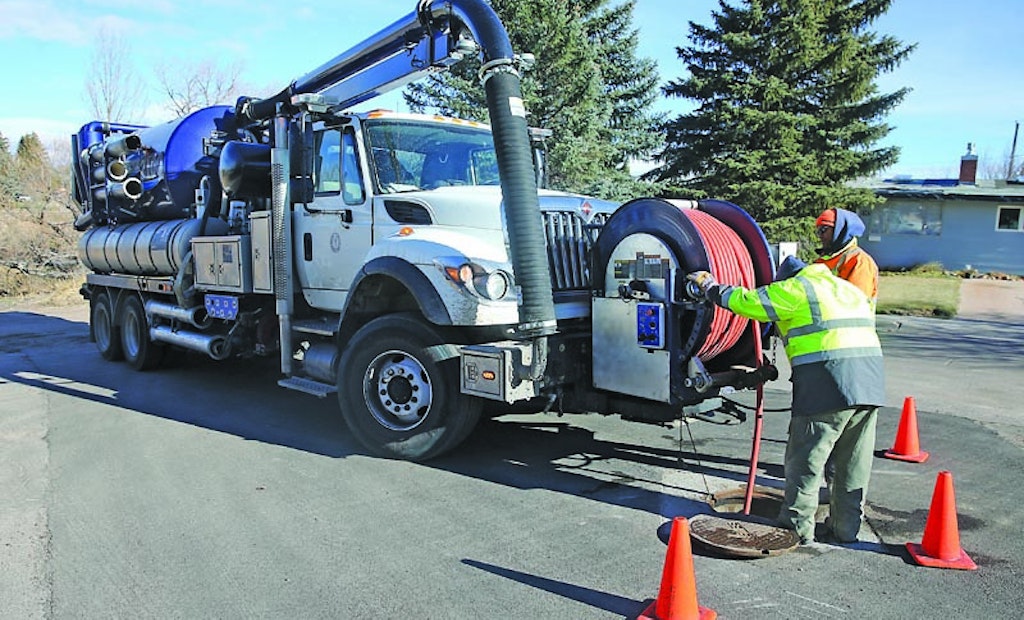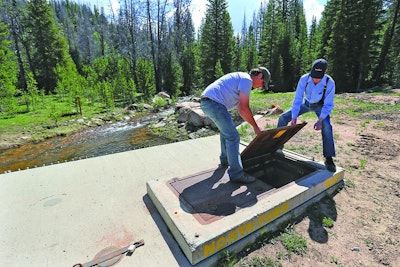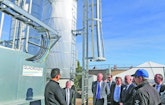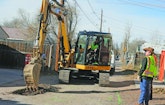
Interested in Cleaning?
Get Cleaning articles, news and videos right in your inbox! Sign up now.
Cleaning + Get AlertsThe Ctity of Cheyenne, Wyo., owes its existence to the construction of the Union Pacific railway — a technological marvel of the 19th century. The Cheyenne Board of Public Utilities (CBOPU) continues that tradition of investigating new technologies, including an advanced fuel cell that uses sewer gases to generate electricity for the benefit of its customers.
The city’s first water system was developed in the 1870s, pumping water from Crow Creek to supply the railroad and provide water for fire protection. It soon expanded to supply homes and businesses.
Through the early 1900s, the city grew into an important military center and cattle town. To meet increased water demands, Cheyenne constructed a series of reservoirs, a water treatment plant, a storage tank and connecting pipelines. The reservoirs, tank and even some of the pipes are still in use today.
During the Dust Bowl years of the 1930s, the city constructed a series of wells to augment the Crow Creek water supply. In 1943 it established the Board of Public Utilities to manage and control both the water and sewer systems. Its first major project: construction of a wastewater treatment plant.
An expanding system
Now a city of almost 75,000, Cheyenne has developed a water system that comprises nine reservoirs and crosses three mountain ranges — the Continental Divide, the North Platte River Basin and the Laramie River Basin. About 250 miles of raw water mains (34 percent ductile iron, 29 percent cast iron and 33 percent PVC) collect and transport water to and from reservoirs. A newly constructed water treatment plant can treat up to 32 million gpd and distribute it through 466 miles of potable water mains. About 328 miles of sewer mains, primarily vitrified clay and PVC, collect wastewater and deliver it to two water reclamation facilities. Another 14 miles of reclaimed water mains deliver recycled water to parks and sports fields.
“As with most water and wastewater systems, ours are in good condition with numerous mains that have exceeded their design life and continue to function,” says Frank Strong, P.E., operations and maintenance manager, CBOPU. “For example, 29 percent of the water system is more than 50 years old. But we’re performing reasonably well with an average of 9.2 water main breaks and 10.8 sewer main backups per 100 miles of collections system in the last five years. Typically, pipe failure in Cheyenne is the result of cracks due to the age of the material or pockets of corrosive soil. We have a large variety of soil types in the area, so we require test holes and geotechnical reports on all new installations.”
In-house crews are on call 24 hours a day to handle water main breaks and sanitary sewer backups. However, winter quickly puts the deep freeze on Cheyenne soil. Jackhammers are often used to break through frost layers anywhere from 3 inches to 4 feet thick.
The utility operates a rigorous preventive maintenance program for both water and sewer systems.
Water distribution system maintenance includes hydrant flushing, valve exercising and curb stop maintenance. The city rehabilitates 2 miles of water mains and replaces 20 fire hydrants annually.
Listening for leaks
Water system leak testing includes 32 remote leak sensors placed inside existing water valve boxes. These are later collected and data is analyzed so that utility staff can follow up reports of potential leaks with higher-precision Gutermann acoustic microphones and correlators.
The maintenance program for the collections system includes 110 miles of sewer main cleaning each year, using four combination trucks — three Vactors and a Vac-Con. The maintenance program also includes manhole maintenance, manhole replacement, point repairs, root treatment, video inspection and lift station maintenance.
“We’re on the High Plains at over 6,000 feet in elevation, but we’re lucky that the local topography only requires us to use five sewer lift stations,” Strong says.
In-house crews perform the majority of sewer maintenance work, with the exception of rehab projects, root treatment and some manhole replacement.
Utility crews also handle sewer point repairs using a trenchless, resin-based pipe patch system.
“We budget annually to rehabilitate 1.5 miles of sewer mains per year,” Strong says.
Predictable growth
While Cheyenne is undoubtedly benefiting from the local oil and gas boom, a diversified economy, including agricultural and high-tech sectors, has the region growing comfortably and steadily at about 1 percent per year.
The city’s capital projects over the next 10 years total an estimated $212 million, with about half that budget devoted to new transmission mains, distribution mains and water main rehabilitation. The budget includes Phase II of the $22.5 million Southern Water Transmission Main project, completed in 2014. The project added 11.5 miles of 42-inch transmission mains to supply water to neighborhoods in the southern areas of Cheyenne. Phase III of the project is already in the planning stage.
“Included in the recommended capital projects is an increase in Cheyenne’s annual water main rehabilitation, from 2 miles per year to 3 miles per year in 2018,” Strong says.
Wastewater collections system construction over the same period will total an estimated $68 million. The biggest project is Phase 1 of a large sewer interceptor, also designed to service southern Cheyenne. In addition, the utility plans to increase its sewer main rehabilitation rate from 1.5 miles per year to 2.5 miles per year, also in 2018.
Powering up with fuel cells
The utility also continues to investigate new technology.
A demonstration project at the utility’s Dry Creek wastewater facility uses biogas to power a Microsoft data center through fuel cell technology, which harnesses chemical reactions directly to generate electricity. The $7.6 million demonstration project will power a containerized Microsoft IT server.
“The server will crunch enough real-life data to test the concept and determine whether the energy provided by the fuel cell will provide consistent energy under load,” says Anja Bendel, director of business development with Cheyenne LEADS, a private, not-for-profit economic development organization that assisted in the bid proposal to host the pilot at CBOPU and helped coordinate the project.
The fuel cell plant was designed to produce 300 kilowatts of renewable power while the data center will only use about 200 kW. The excess electricity will be delivered to the wastewater treatment plant. Microsoft will use the data collected in further research, which could see pint-sized fuel cells placed directly inside data server racks.
A bonus for the utility — by installing the sophisticated monitoring systems associated with the project, the wastewater plant will be better able to monitor and analyze its own overall operations.
The project combined the contributions of private industry partners such as Microsoft, Jacobs Engineering, Evoqua Water Technologies and FuelCell Energy Inc. with a coalition that included CBOPU, the University of Wyoming, the Wyoming Business Council, the Western Research Institute, and state and local government partners.
After the 18-month demonstration project has concluded, Microsoft will donate the data plant infrastructure to the participants, including the University of Wyoming, for further research.
“It’s unusual to have that many stakeholders working together on a common goal,” Bendel says. “This utility project shows what you can achieve when you’re open to innovation and willing to consider new endeavors.”










